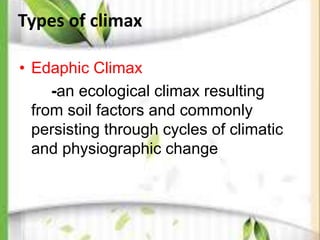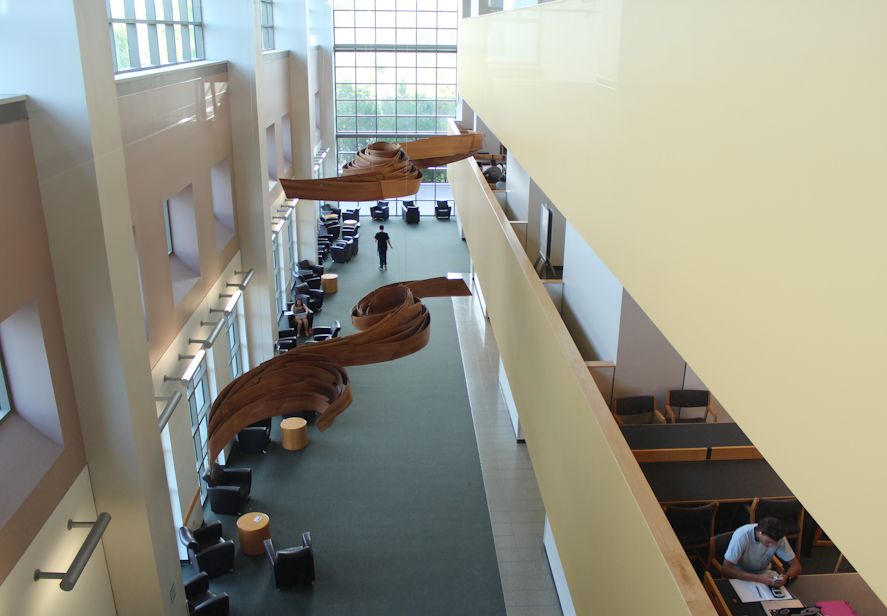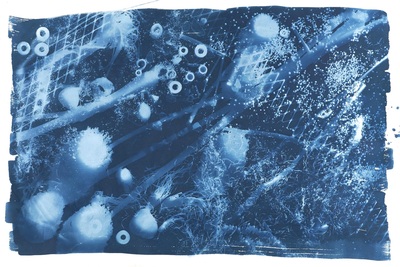

It is deduced that several ecological barriers exist between the sites, which is attributed to their unique terrestrial biota. described as the edge effect, first defined by Odum (1958) as the tendency for increased population density and species richness at the junction zone between two communities. However, the presence of 11 animal species exhibit valuable results in determining the ecological status of TVPL. This transitional zone rich in biodiversity is known as the. The fairly small number of animal samples present difficulty in providing conclusive findings to the wildlife structure of the two study sites. The ecotone is a zone where spatial change of the community variables is more pronounced than on the sides of the zone (Lloyd 2000). Edge effects are the changes in biodiversity that occur inside the space surrounding the shared edge of two or more distinct ecosystems. Abstract: We searched for the presence of edge effects in the occupation of adjacent boreal-forest habitats by red- backed voles (Clethrionomys gapperi). Comparison of the plant diversity in Taal Volcano Crater Island and Romandan Falls within the forested areas of Mataas na Kahoy, Batangas reveal that both sites support remarkably different vegetation, with the former supporting a smaller floral diversity. In this study, we conducted biodiversity censuses in the four sites in TVPL to provide baseline information regarding the community structure of the selected study sites. found in these regions (ecotones) and this is called edge effect. These ecotones (the regions where the edges of two ecosystems overlap), contain a greater diversity of species than either of the two separate ecosystems, and. However, the current structure and assemblage of its terrestrial biotic communities remain relatively unstudied. An ecotone is an area that acts as a boundary or a transition between two ecosystems. Oakland, Calif.: US Department of Agriculture, Western Region, 28 pp.With the exponential rise of human activities in the past decades, majority of studies conducted in Taal Volcano Protected Landscape (TVPL) are geared towards the conservation and preservation of Lake Taal's remaining biodiversity. Sixty Years of Change in a Central Arizona Grassland-Juniper Wood Ecotone. Ljubljana: Institute for Testing and Research in Materials and Structures, and Ithaca, NY: Cornell University, pp.

(eds), Social and Economic Aspects of Earthquakes. Settlement and change in ‘basal zone ecotones’: an interpretation of the geography of earthquake risk. An ecotone is a zone of junction or a transition area between two biomes (diverse ecosyste an ecotone is zone of junction or transition area between two. Spatial analysis of habitat selection by Sitka black-tailed deer in southeast Alaska, USA. Ward, Col.: Center for Mountain Ecology, 139 pp.Ĭhang, K-T., Verbyla, D. Ecotones may appear as a gradual blending of two or more communities across a broad area. The edge effect is a phenomenon along the ecotones, with higher density and biodiversity due to the more varied ecosystem traits, diverse vegetation, and the number of landscape aspects. This increase in biodiversity is called the edge effect.


The Fourth of July Valley: Glacial Geology and Archeology of the Timberline Ecotone. An ecotone is a zone where an ecosystem (or community) rapidly shifts from one to the other. Competition in heathland along an experimental gradient of nutrient availability. Aerts, R., Berendse, F., Klerk, M., and Bakker, C., 1990. ecotone effect The pattern of increased species rich- ness (number of species) and abundance in eco- tones and the occurrence of unique ecotonal species.


 0 kommentar(er)
0 kommentar(er)
